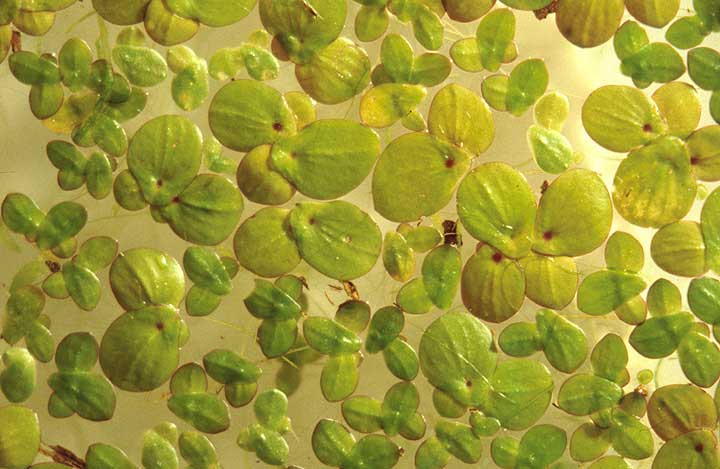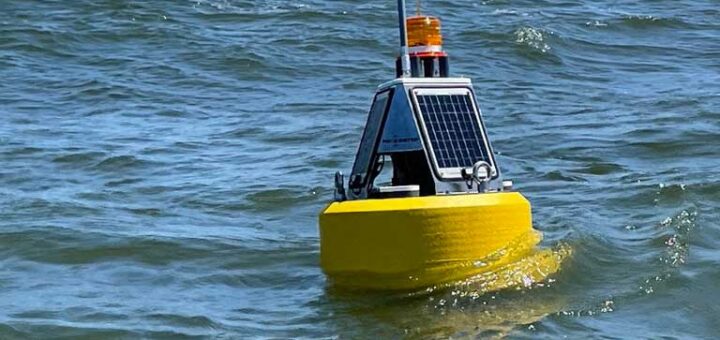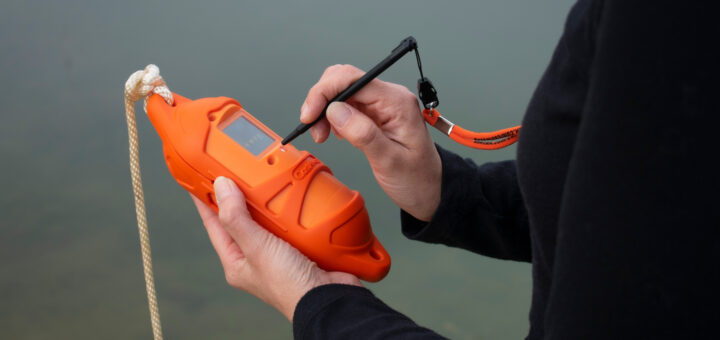Dotted Duckweed
Daniel Kelly | Fondriest Environmental
This free-floating plant is easy to confuse with regular duckweed. While the invasive specimen has a series of raised ridges, confused as dots, the common duckweed has red spots. And dotted duckweed is small, like many of the other species related to it.
Native to Asia and Australia, dotted duckweed goes by the latin name Landoltia punctata. It produces thin roots, but can grow together in dense mats that hinder light penetration through water. These are made by fronds (divided leaves) that are about two times longer than they are wide when they reach maturity.
Dotted duckweed is distinguished by its smaller frond and the characteristics of its roots. In the summertime, when waters are warm, it concentrates at the surface. But when the weather changes and temperatures drop, the roots of dotted duckweed are no longer produced. By ceasing root production, the plant sinks to the bottom of a water body for warmth.
Dotted duckweed was introduced to the United States in 1930, establishing its first population in Missouri. It survives very well in drought conditions and has spread to most all of the southern states, including Alabama, Georgia, Louisiana, Mississippi, North Carolina, South Carolina, Tennessee and Virginia. Dotted duckweed can also be found in parts of Europe.
This plant has a high nitrogen content, and has the potential to be used as a fertilizer if composted. Because of its tendency to hinder light penetration through water, it could be used to treat water bodies that have excessive nutrient levels.
Prevent Its Spread
It is difficult to prevent the spread of dotted duckweed, because it is mostly transported to new locales by ducks, geese and other waterfowl. It is very easy for a swimming duck to pass through a mat of duckweed on a lake or pond; from there, the plant lodges itself in the bird’s feathers and makes entry to other water bodies when the bird migrates.
Once dotted duckweed has taken up residence, its spread can be stymied by mechanical removal or treatment with herbicides that are usually sprayed. With the plant’s small size, it is difficult to spray all the constituents of a dotted duckweed population, so multiple herbicide applications, which is costly, may be needed to make an impact.
Sources:
- http://glmris.anl.gov/documents/docs/ans/Landoltia_punctata.pdf
- http://www.iucnredlist.org/details/168991/0
- http://plants.ifas.ufl.edu/node/222
- http://dnr.wi.gov/topic/Invasives/documents/classification/Landoltia%20punctata.pdf
- http://www.ehow.com/list_6713384_types-duckweed.html
- https://ipmdata.ipmcenters.org/documents/cropprofiles/US-SEAquaticWeeds.pdf
- https://mdc.itap.purdue.edu/item.asp?itemID=18894










